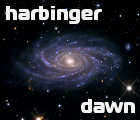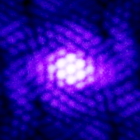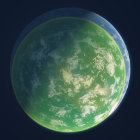|
Defining Planethood
|
|
| HarbingerDawn | Date: Tuesday, 15.12.2015, 20:34 | Message # 91 |
 Cosmic Curator
Group: Administrators
 United States
United States
Messages: 8717
Status: Offline
| I said that it was large enough to be round, not that it was round. And here's your citation http://web.gps.caltech.edu/~mbrown/dps.html
2012 VP113
All forum users, please read this!
My SE mods and addons
Phenom II X6 1090T 3.2 GHz, 16 GB DDR3 RAM, GTX 970 3584 MB VRAM
|
| |
| |
| steeljaw354 | Date: Tuesday, 15.12.2015, 20:38 | Message # 92 |
 World Builder
Group: Users
 Pirate
Pirate
Messages: 862
Status: Offline
| Seems solid but our current measurments could be off a bit since these objects are FAR away. The object that ALMA discovered could be super earth way out there, or a brown dwarf in our solar system which hopefully is the case.
Edited by steeljaw354 - Tuesday, 15.12.2015, 20:40 |
| |
| |
| Watsisname | Date: Tuesday, 15.12.2015, 22:53 | Message # 93 |
 Galaxy Architect
Group: Global Moderators
 United States
United States
Messages: 2613
Status: Offline
| Quote steeljaw354 (  ) Any proof that it is round? [Citation needed]
There is this thing known as "physics".
http://arxiv.org/ftp/arxiv/papers/1004/1004.1091.pdf

|
| |
| |
| steeljaw354 | Date: Tuesday, 15.12.2015, 22:55 | Message # 94 |
 World Builder
Group: Users
 Pirate
Pirate
Messages: 862
Status: Offline
| I'm not stupid. Just how large is the sednoid?
Edited by steeljaw354 - Tuesday, 15.12.2015, 22:57 |
| |
| |
| Watsisname | Date: Tuesday, 15.12.2015, 23:10 | Message # 95 |
 Galaxy Architect
Group: Global Moderators
 United States
United States
Messages: 2613
Status: Offline
| Larger than the potato radius for icy bodies, by about 50%.

|
| |
| |
| steeljaw354 | Date: Tuesday, 15.12.2015, 23:38 | Message # 96 |
 World Builder
Group: Users
 Pirate
Pirate
Messages: 862
Status: Offline
| Seems sensible but it's probably only 300KM accross, while sedna could be 1000KM
I found this https://en.wikipedia.org/wiki....its.png
Most are probably small rocks, Means Something pushed them like something Big like earth sized maybe.
Edited by steeljaw354 - Tuesday, 15.12.2015, 23:42 |
| |
| |
| Watsisname | Date: Saturday, 19.12.2015, 00:33 | Message # 97 |
 Galaxy Architect
Group: Global Moderators
 United States
United States
Messages: 2613
Status: Offline
| 600km across. Like Harbinger said, it is about half the size of Sedna.
This is also a completely different situation than the object recently discovered by ALMA. Here, we have characterized its orbit, so we have good constraints on its distance and size.

|
| |
| |
| steeljaw354 | Date: Saturday, 19.12.2015, 01:46 | Message # 98 |
 World Builder
Group: Users
 Pirate
Pirate
Messages: 862
Status: Offline
| Is it a star or planet? Alpha Centauri D? What are your thoughts on it?
Edited by steeljaw354 - Saturday, 19.12.2015, 01:46 |
| |
| |
| Watsisname | Date: Saturday, 19.12.2015, 03:35 | Message # 99 |
 Galaxy Architect
Group: Global Moderators
 United States
United States
Messages: 2613
Status: Offline
| If it were a star then it would radiate strongly in the infrared, but we don't seem to see that. And a planet at 4LY wouldn't be visible from these observations at all. So we think it is not a part of the Alpha Centauri system. It is likely within our own solar system. How big it is will depend on how far out it is (the farther, the larger, for a given apparent magnitude). It could be smaller than Pluto, or it could be as large as a super-Earth.
We'll need to make more observations of it over a longer period of time to determine its orbit and narrow down on the possibilities.

|
| |
| |
| steeljaw354 | Date: Saturday, 19.12.2015, 13:41 | Message # 100 |
 World Builder
Group: Users
 Pirate
Pirate
Messages: 862
Status: Offline
| If it was a super earth, how would we classify it? Would it be a planet? I think so
|
| |
| |
| Watsisname | Date: Saturday, 19.12.2015, 23:43 | Message # 101 |
 Galaxy Architect
Group: Global Moderators
 United States
United States
Messages: 2613
Status: Offline
| It would probably (almost certainly) fail the planetary discriminant criterion, because we expect that there are a lot of similarly sized bodies out there. It is not very unique and the dynamics of the trans-Neptunian objects are not governed by it.

|
| |
| |
| steeljaw354 | Date: Saturday, 19.12.2015, 23:47 | Message # 102 |
 World Builder
Group: Users
 Pirate
Pirate
Messages: 862
Status: Offline
| But if it is 10X the distance away from the sun than pluto is, we will probably find nothing near super earth sized other than itself. If there were 5 or 6 similar sized objects in similar orbits, wouldn't we know the effect?
Edited by steeljaw354 - Saturday, 19.12.2015, 23:48 |
| |
| |
| Watsisname | Date: Sunday, 20.12.2015, 00:00 | Message # 103 |
 Galaxy Architect
Group: Global Moderators
 United States
United States
Messages: 2613
Status: Offline
| That's true, they are difficult to find and it will take some time to do so. But we do expect them to be there, both from models of solar system evolution, and from what we have observed so far. For example, it was at first a big surprise that we found Sedna so close to its perihelion distance, because it spends most of its time at much greater distances from the Sun. This implies there are many more Sedna-like objects with similar orbits, rather than just Sedna alone and we only got lucky.
As for their effects, the volume of space at 10X Pluto's distance is pretty enormous. I don't think a few super-Earth's would significantly perturb planetary orbits, or even each other.

|
| |
| |
| steeljaw354 | Date: Sunday, 20.12.2015, 01:34 | Message # 104 |
 World Builder
Group: Users
 Pirate
Pirate
Messages: 862
Status: Offline
| Only more mysteries are made with each discovery.
Edited by steeljaw354 - Sunday, 20.12.2015, 01:34 |
| |
| |
| Terran | Date: Monday, 06.06.2016, 02:12 | Message # 105 |
 Observer
Group: Users
 United States
United States
Messages: 12
Status: Offline
| I know this is old but it came up in another thread, honestly my definition of planet hood is an object large enough to make itself round, while small enough for deuterium fusion not to occur... Nothing else. However all Solar planets have to orbit the sun, If we have 20 planets then yay! I don't have a problem with that. But my definition would allow some rouge planets to be classified under planet, and even some moons. Solar Planets would be the only category of planet with an orbital definition. Under this the moon would be a planet (such a contradiction) because the sun pulls more on the moon than Earth does. However it will still be a satellite of Earth... They just need to dump the name planet entirely and create something new...
Forgot this part of the definition: Cannot have ever been a star or other object that would fall under a stellar classification, because black holes would have fallen into this definition.
"To comprehend all that can be... but to not even grasp that which is..."
Processor: Intel i7 , 4 GHz | RAM: 16 GB | OS: Windows 8.1 , 64 bit | Graphics: NVIDIA GeForce GTX 960 , 2048 D.V.M. | DirectX: 11.0
Edited by Terran - Monday, 06.06.2016, 02:15 |
| |
| |